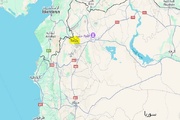Freydoun Biglari, Head of the archaeological team, made the announcement, adding “the discovery of artifacts dating back to the Paleolithic period in Kurdistan suggests that the primitive hunters inhabited the valley of Sirvan River from 40,000 to 12,000 years ago."
According to Biglari, the discovered artifacts include stone tools, bones of hunted animals, and the remains of a stove belonging to the middle, new and post-Paleolithic eras.
This set of caves and shelters are located along Sirvan River and near Nav Village in Sarvabad city. The excavations carried out in these three locations have led to the discovery of these important remains.
The findings have offered for the very first time valuable information about the lifestyle, hunting strategies and the culture of tool-making of these primitive hunters and food collectors.
According to the archaeologist, one of the key findings of this season of excavations was the identification and exploration of a rock shelter called ‘Marv’ which contains artifacts belonging to middle Paleolithic era and probably aged between 40,000 to more than 70,000 years.
“Preliminary analysis of animal remains indicates that the residents of the shelter used to hunt mountain goats and possibly rams in ‘Shahou’ mountains and the heights overlooking Sirvan Valley,” said Biglari, noting that their fossil remains with burn marks and fractures have been discovered along with various stone tools.
“Given the fact that the human fossils from this period have been found in Bisitun and Shanidar caves, it is safe to assume that the residents of the area had most likely been from Neanderthal species that have become extinct about forty thousand years ago,” he added.
Biglari went on to add that with the extinction of the Neanderthals, a new homo sapiens had entered this area and the signs of their habitation have been discovered in two other locations there.
MS/3011741























Your Comment